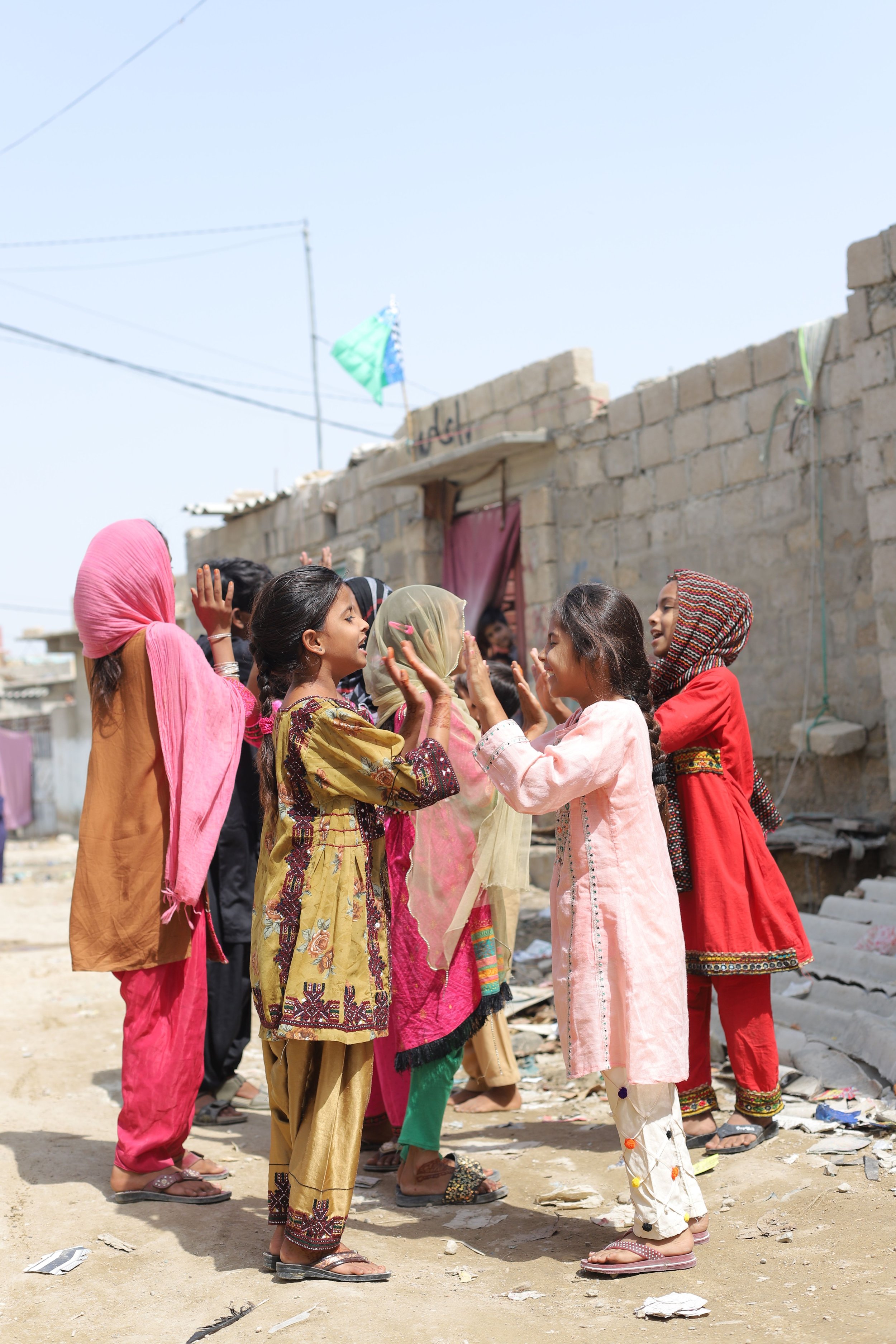
What is our AtHome program?
Our AtHome Program is a revolutionary initiative designed to harness the potential of smartphones to promote literacy. In Bangladesh and Pakistan, both countries with high smartphone availability, we identified parents with internet connectivity and smartphones and introduced them to the concept of homeschooling through smartphones. Via targeted messages, we provided links to our learning applications, which parents downloaded for their children, and monitored their progress.
Our facilitators maintain regular check-ins with parents, and students take weekly online quizzes to reinforce their learning. Currently, this initiative is being piloted in the Bihari Camps in Bangladesh and in an underserved community in Islamabad, Pakistan.
Interestingly, the program's reliance on parental involvement is opening new doors to family literacy. Parents are showing a keen interest in being more involved in their children's education, which research suggests is crucial for academic success. Moreover, many illiterate parents are seizing this opportunity to educate themselves, a potentially life-changing development.
Our goal is to make family literacy a key focus of our program, transforming not just children's lives but entire families, empowering both children and parents to learn and grow together.
Our AtHome Learning Program
Why are we doing it?
The potential reach of smartphones is enormous. In Pakistan alone, 24 million parents of school-going children have smartphones, and this number is rapidly increasing. The program requires limited incremental investment, with primary costs covering software, remote facilitator support, and data plans. If successful, this will be our most cost-effective program yet.
Our program also recognizes the significant barriers to education faced by girls and children with disabilities. By facilitating home-based learning through mobile technology, we ensure that education is accessible to children who might otherwise be unable to attend school, allowing these children to continue their education in the safety and comfort of their homes. This is particularly vital in regions where cultural or mobility constraints limit children's ability to attend physical schools. Additionally, community workshops engage parents and guardians in their children’s learning processes, creating a supportive environment for effective home-based education.
Where we are today
While we've made significant strides with this groundbreaking pilot initiative in both Pakistan and Bangladesh, with pilot programs reaching 500+ students, we are facing challenges such as structuring the program effectively to optimize learner engagement, overcoming cultural barriers—particularly those involving girls' use of technology—and ensuring access to devices, as families often share one smart phone, which the father often takes to work. These obstacles are real, but they fuel our determination to innovate and adapt.
The demand for our AtHome Program is growing, with substantial interest from regions eager to embrace this innovative approach, recognizing the program's potential to transform education in their communities. One such region is the Northern areas of Pakistan.
We're committed to meeting this demand and overcoming current challenges, ensuring that every child, regardless of their circumstances, has the opportunity to learn and thrive.


